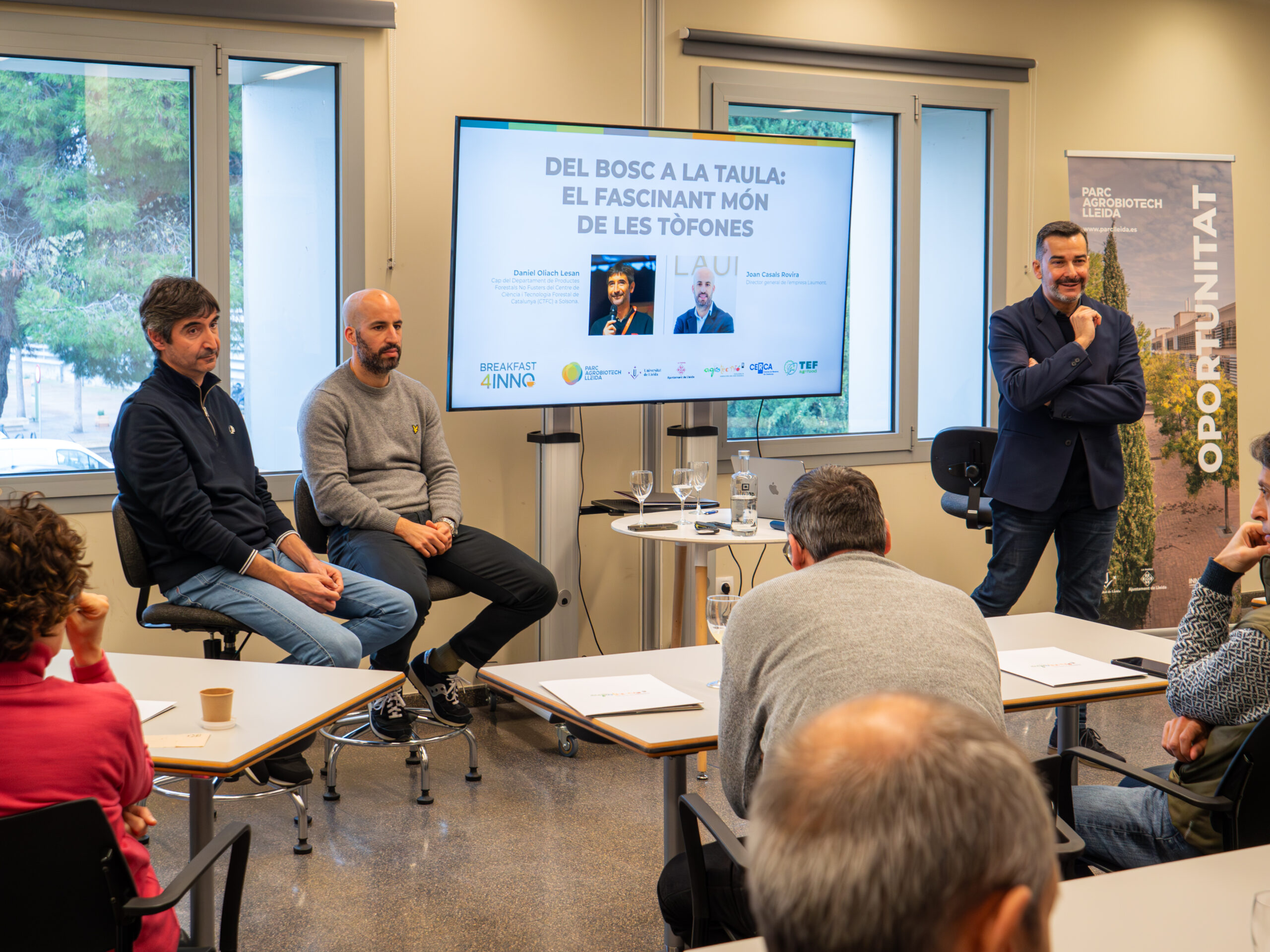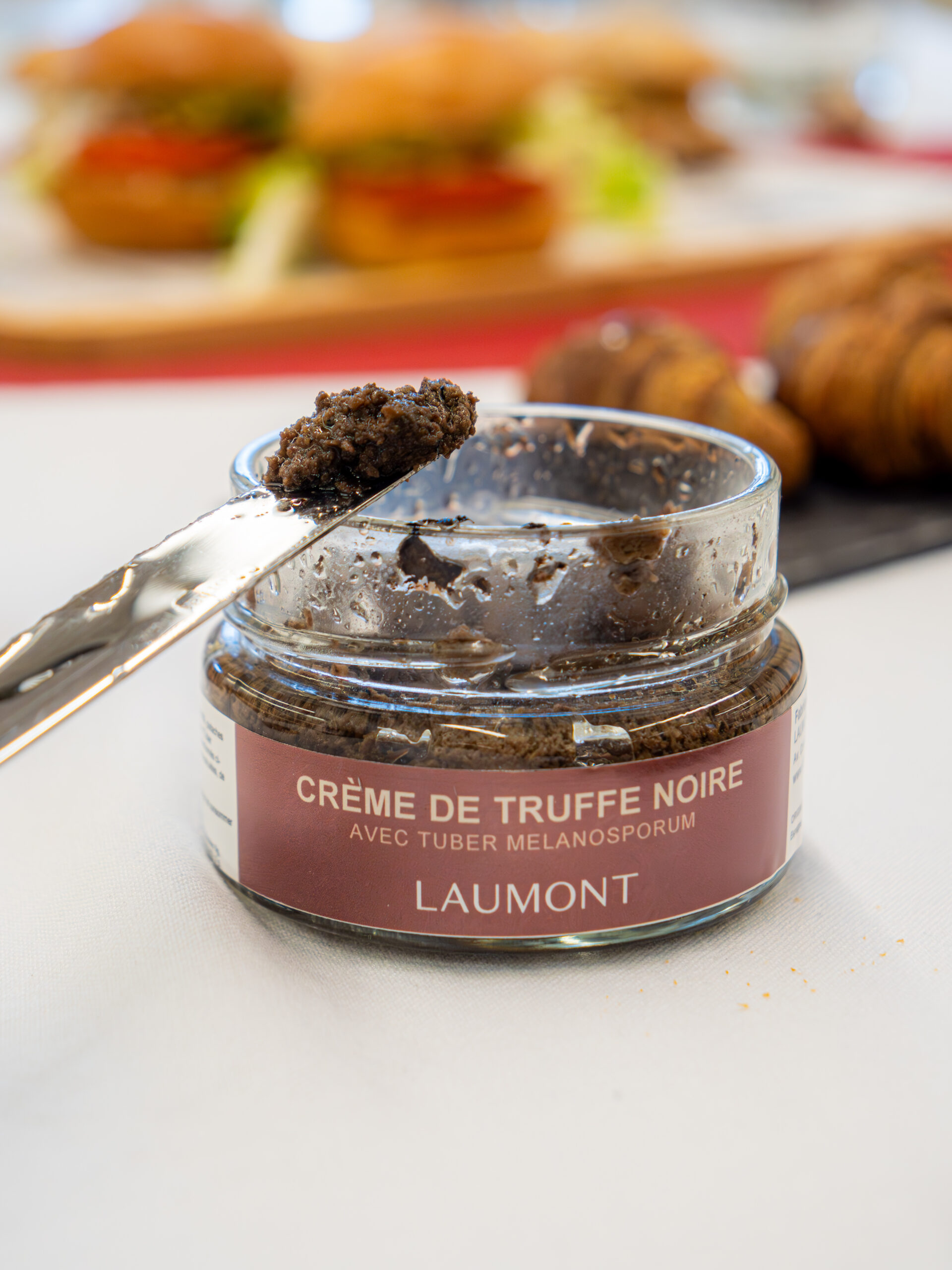- Spain is the world’s leading exporter of this fungus and Catalonia accounts for a third of all that is sold.
- The new informative lunch Breakfast4inno of Agrotecnio and the Agrobiotech Park dealt with the world of the black truffle.

The characteristics of the black truffle, its production and commercialisation was the protagonist of the last debate of the 2024 ‘Breaskfast4Inno’, in which the head of the Mycology and Tubericulture Group of the Centre of Forest Science and Technology of Catalonia (CTFC) in Solsona, Daniel Oliach and Joan Casals Rovira, director of the company Laumont, a company located in Tàrrega that is a leader in the sale and distribution of truffles and mushrooms and that exports to more than 50 countries around the world, took part.
During the luncheon, the increase in demand for truffles in gastronomy was discussed, due to the enormous qualities of this product that combines biodiversity, technique and passion. Catalonia stands out for its extensive surface area suitable for the cultivation of black truffles, especially in mid-mountain areas where traditional agricultural activities are facing difficulties. This industry represents a complementary opportunity to diversify the rural economy.
According to CTFC researcher Daniel Oliach, Spain is the main producer and exporter of black truffles, but ‘it has happened to us like with oil, France and Italy have been able to sell more’. Catalonia, in fact, accounts for 32% of the national export of fresh truffles, and Lleida has an important weight, since it accounts for 70% of Catalan exports.
In spite of this, domestic consumption is residual, with work reaching 1% of that exported by the Laumont company. For this reason, the speakers insisted on the need to promote domestic consumption, ‘to help build a truffle culture and democratise its consumption’. The general manager of the Laumont company, Joan Rovira, added that ‘1 kg of fresh black truffle can cost between 500 and 1000 euros depending on the species, but people need to know that 30 or 40 grams of truffle, which is what you can eat at a dinner party, is worth the same as a good wine’.
Rovira explained the evolution of the company, which was founded in 1980 as a result of ‘the first founder’s hobby of collecting truffles’. Now, the company sells more than 3.5 million truffles a year, has a turnover of 38 million euros and is the world’s leading exporter of truffles. According to Laumont’s general manager, ‘the key to success lies in being faithful to our philosophy, we try to be close to the farmers to take care of the product from the very beginning. We employ 500 farmers who harvest truffles for us and are loyal to us, and we are already dealing with them for the third generation’.
Rovira has defended the origin of the truffle produced in Spain, and has denounced malpractice on the part of other countries ‘that buy it in Spain and sell it as their own’. We have gone all over the world defending the Catalan black truffle, and now they are beginning to recognise us’.
The company sells fresh black truffle but also prepared products such as truffled salt, truffle sauces and ‘ready to eat’ products.
Wild truffle or cultivated truffle
During the debate, the speakers explained that the production of wild black truffle has fallen drastically in Catalonia, due to the lack of forest management and the loss of traditional uses. The weather in recent years has not helped the production of wild truffles either, with continuous droughts and very high temperatures in spring and summer, which are detrimental to their birth and survival.
What has grown exponentially are cultivated truffles, which have the same quality as forest truffles and currently account for 90% of production. Thanks to cultivation techniques, the harvesting season has been lengthened. They also stressed the importance of training the dogs that collect them and the need for more research into the insect pests that affect them.


